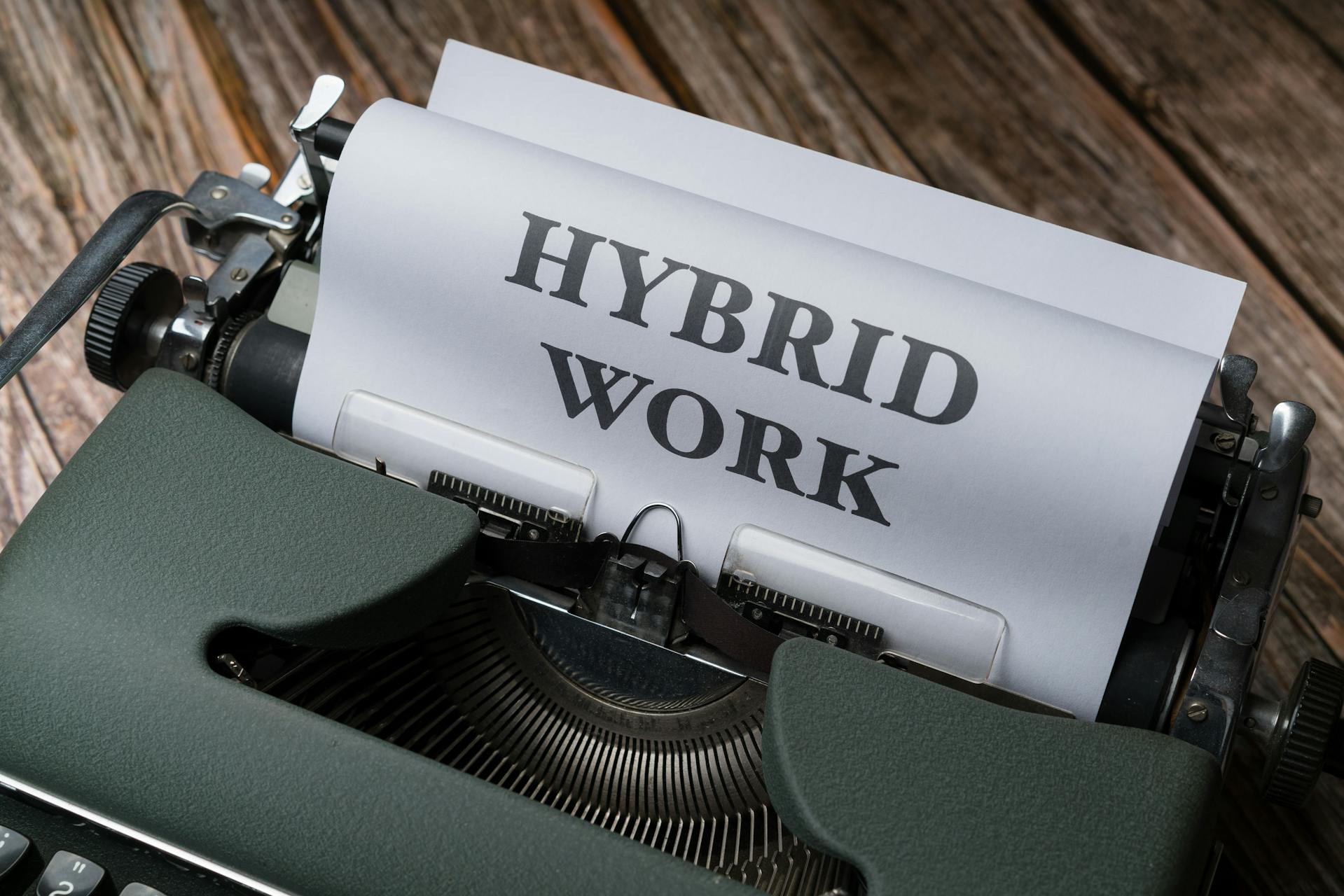

It is no secret that hybrid work models have transformed the professional landscape. According to Gallup, 54% of Americans work in hybrid arrangements. Moreover, six in ten remote employees want hybrid work arrangements. Additionally, eight out of ten employees who are capable of working remotely expect to work in a hybrid or fully remote environment.
Although it offers flexibility and potential for a work-life balance, it also comes with challenges. Hybrid workers struggle to balance work and personal lives, manage distractions, and maintain healthy separations between the two.
However, hybrid work will remain a common and favorable trend for years to come. This means we must understand its features, benefits, and challenges. After all, identifying these realities of hybrid work will enable individual workers, managers, and organizational and coaching psychologists to provide the most effective support to hybrid workers and encourage them to succeed.
This blog post explores strategies that will help hybrid workers thrive in this new normal. Specifically, we will discuss ways to enhance well-being, manage time effectively, and achieve sustainable work-life balance.
The Juggling Act: Challenges of Hybrid Work
Martine Haas, in an article for the Harvard Business Review, describes the most common challenges of hybrid work as “5C challenges”: communication, coordination, connection, creativity, and culture. In addition, hybrid workers face the following challenges:
- Blurred boundaries. It is easy to blur the line between work and personal life. Constant emails and calls occupying personal time can lead to burnout and stress.
- Time management. Managing work schedules in home and office environments requires strong time management skills.
- Distractions. Working from home often means dealing with household chores, family members, and social media distractions. As such, it can be difficult to keep your focus.
- Social isolation. When working remotely, one may feel isolated and disconnected from colleagues.
- Lack of movement. In the long run, spending extended periods sitting at home or in the office can be detrimental to both mental and physical health. A survey from Upright, an app promoting good back health, found that remote workers take 16 steps from their bed to their workstation. Furthermore, studies have shown that such workers are physically inactive compared to their office-going colleagues.
Mastering Your Time: Strategies for Efficiency
In a hybrid workplace, effective time management is a must. With that said, to manage your schedule, follow these steps:
- Plan like a pro. Don’t underestimate the power of a schedule. It doesn’t matter what calendar you use; leave time to complete tasks, attend meetings, and take breaks. Spend 15-30 minutes daily analyzing your schedule and prioritizing tasks according to importance and urgency.
- Time blocking. Identify specific times when you will focus on high-priority tasks. This will eliminate distractions and allow crucial projects to progress.
- Batch similar tasks. The best way to minimize context switching is to group similar activities together. Work on specific tasks at specific times of the day, such as responding to emails, making calls, or making calls. This will reduce the mental energy you spend switching between tasks.
- Utilize the power of “Do Not Disturb.” Establish boundaries between focused work and interruptions by posting a sign on your office door or switching your computer to silent mode. Inform your colleagues when you will be available if you need uninterrupted focus. A shared calendar is the easiest way to do this.
- Take advantage of time-management tools. With project management apps such as Trello or Asana, you can visualize your workflow and prioritize tasks. Time management apps like RescueTime can reveal hidden time sinks and help you adjust your schedule accordingly by tracking your activities throughout the day.
Optimizing Your Hybrid Work Experience
Want to make the most of hybrid work? You can optimize your hybrid work experience by following these steps:
From a company standpoint:
- Flexibility and autonomy are key. Giving your employees control over how their workdays are structured can boost productivity and morale.
- Communication and expectations must be clearly defined. Hybrid environments require clear guidelines around communication protocols, meeting schedules, virtual options, and project management.
- It’s all about the right technology. Invest in reliable tools for video conferencing, project management, and file sharing to ensure everyone stays connected and has access to the information they need. Some suggestions would be Calendar, Slack, Google Drive, and Microsoft Teams.
- Strategically plan meetings. To minimize disruptions on remote days, consider grouping meetings for in-office days.
From an employee standpoint:
- Establish a dedicated workspace. Dedicate a specific area in your home for work activities, whether it is a spare room, a corner of your living room, or even a designated area in your bedroom. This will help you focus during work hours and relax beyond work hours.
- Plan your day strategically. When using a hybrid model, schedule meetings that are convenient for you, considering colleagues who may be in different time zones.
- Again, communication is key. On days when you plan to work remotely, keep your team informed of your availability and whereabouts. This will maintain transparency and avoid confusion.
- Keep the social aspect in mind. Although remote work can be flexible, human connection is essential. Maintain a sense of community by connecting with colleagues in person whenever possible.
- Be proactive. Do not wait until questions arise to ask them. Be upfront with your manager about potential problems or roadblocks.
A hybrid work environment, which fosters productivity, collaboration, and a sense of belonging, can be created by implementing these strategies.
Prioritizing Wellbeing: Building Resilience
For long-term success, it is crucial to balance work and personal life. As a hybrid worker, you can nurture your well-being by following these tips:
- Establish a routine. Work consistent hours, regardless of where you are located. Also, regulating your sleep-wake cycle will make you feel less tired and have more energy. Furthermore, establishing clear boundaries between work time and personal time will prevent you from being “always on.”
- Move it or lose it. Schedule time for physical activity every day, whether it’s a brisk walk, online fitness classes, or even a short yoga session. Exercise can relieve stress, improve sleep quality, and increase energy.
- Practice mindfulness. Meditation and deep breathing can help you manage stress and improve your focus. To get started, try guided meditation apps like Calm or Headspace.
- Make the most of breaks. Your breaks should be spent doing things that recharge you, such as reading, spending time in nature, or listening to music.
- Maintain healthy habits. Make sleep a priority, eat nutritious meals, and stay hydrated throughout the day. As a result of these habits, we can achieve physical and mental well-being.
- Seek support. Don’t hesitate to speak to your manager or HR representative when you’re struggling. You may be able to find resources to help you manage your workload or address any concerns you have.
Establishing Clear Boundaries
This is not negotiable. In a hybrid workplace, boundaries are essential for maintaining a work-life balance. If you are having trouble setting clear boundaries, though, follow these tips:
- Communicate your schedule. Keep your colleagues informed about your work hours at home and the office. Use online scheduling tools or calendar apps to avoid unexpected interruptions or scheduling conflicts.
- Establish communication expectations. Be sure to let your colleagues know when and how to reach you. In some instances, it may be necessary to specify specific times for phone calls and express urgency through e-mail or instant messaging.
- Don’t be afraid to say no. If additional work requests will overburden your schedule, don’t hesitate to decline them. Ensure your existing commitments are prioritized and your limitations are communicated effectively.
- Power down after work. During non-working hours, avoid checking work emails and messages. Also, you can relax and fully disconnect by turning off notifications and silencing work devices.
In the end, building strong boundaries keeps you from burnout and enables you to work more effectively during your actual working hours. Also, maintaining quality concentration and output is made possible by clearly defining your work time.
The Bottom Line
To manage your time and well-being in a hybrid work environment, you must find a system that works for you. As such, Take time to experiment with different strategies, be kind to yourself, and don’t hesitate to adjust your approach as necessary.
In addition, don’t be afraid to speak up for your needs and to communicate your availability and expectations.
[Related: Juggling It All: Effective Time Management Strategies for Working Mothers]
FAQs
How can I create a schedule that works for both in-office and remote work days?
- Plan your week. Schedule time for focused work, meetings, and breaks on both in-office and remote days.
- Task prioritization. Whether at home or work, schedule demanding tasks for when you are most productive.
- Optimize locations. Leave collaborative tasks for in-office days and schedule tasks that require focus for quiet remote days.
- Communicate. To avoid scheduling conflicts, share your schedule with colleagues.
I miss the social interaction of the office when working remotely. How can I combat feelings of isolation?
- Schedule virtual check-ins. Keep in touch with colleagues via video calls or instant messaging regularly.
- Plan in-person interactions. On office days, schedule collaborative work sessions or team lunches.
- Maintain connections outside of work. Get in touch with friends and family and make an effort to socialize.
I find myself working longer hours at home. How can I establish boundaries?
- Set clear working hours. Even when working remotely, follow them as closely as possible.
- Communicate boundaries. If you won’t be available during work hours, let colleagues know and politely decline their requests.
- Right to disconnect. Companies often have policies that allow employees to switch off after work. Make sure you are familiar with these and utilize them.
What can I do to maintain a healthy work-life balance while working hybrid?
- Create a dedicated workspace. Especially at home, this helps mentally separate work from personal life.
- Take breaks. Even if you work remotely, move around during the day.
- Maintain a routine. Maintain regular sleep, meal, and exercise schedules wherever you are.
How can I improve my well-being while working in a hybrid environment?
- Ergonomics matter. Maintain a comfortable workspace, both at home and at work.
- Prioritize mental health. You can reduce stress by practicing mindfulness exercises or meditation.
- Don’t neglect physical health. Don’t let busy schedules prevent you from exercising and eating healthy meals.
Image Credit: Markus Winkler; Pexels











Deanna Ritchie
Editor-in-Chief at Calendar. Former Editor-in-Chief and writer at Startup Grind. Freelance editor at Entrepreneur.com. Deanna loves to help build startups, and guide them to discover the business value of their online content and social media marketing.